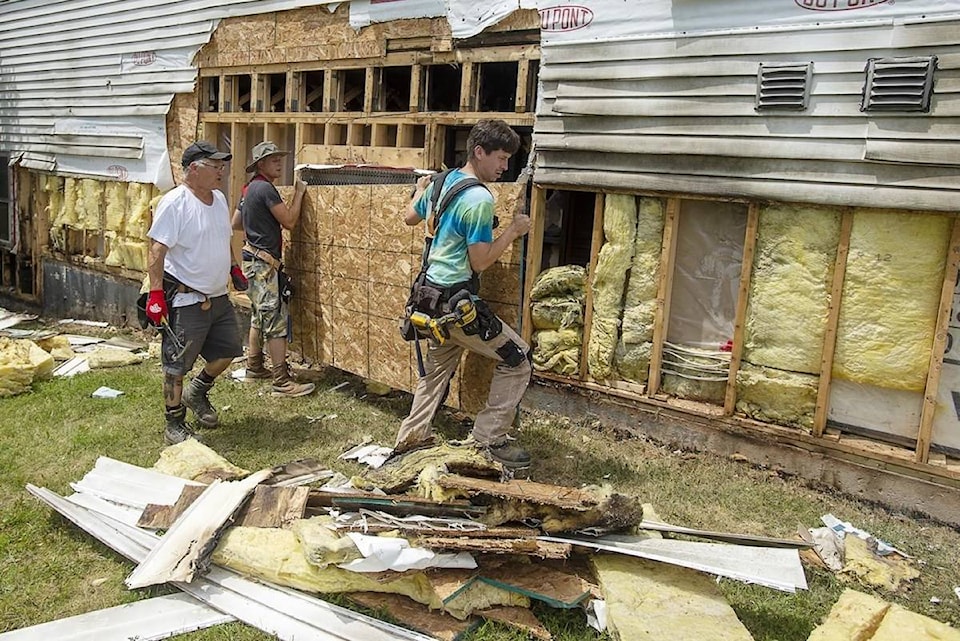Police are investigating a suspicious fire that damaged the Catholic church in a First Nations community north of Halifax, the latest in a recent string of church fires on Indigenous lands reported in two other provinces.
The RCMP in Indian Brook, N.S., say the fire at St. Kateri Tekakwitha Church was reported Wednesday morning at 4:20 a.m. The church serves the Sipekne’katik First Nation, about 64 kilometres north of the port city.
RCMP spokesman Cpl. Chris Marshall says the province’s fire marshal has been called in to determine the cause of the fire, which damaged the south side of the building on Church Street. He could not confirm why investigators described the source of the fire as suspicious.
“It could be a multitude of factors,” Marshall said in an interview. “It could be anything from finding an accelerant to speaking to witnesses in the area, to possible video surveillance.”
The Archdiocese of Halifax-Yarmouth issued a brief statement confirming the Katilin Healing and Cultural Centre attached to the church was damaged, but no one was injured. “The volunteer fire department was on the scene quickly and we are grateful for their rapid response. Archbishop (Brian) Dunn visited the site this morning and asks we keep everyone involved in our prayers.”
Other church fires in British Columbia and Alberta have broken out since the discovery in May of what’s believed to be the remains of 215 children in unmarked graves at a former residential school site in Kamloops, B.C. Last week, the Cowessess First Nation in southeastern Saskatchewan announced that ground-penetrating radar detected 751 unmarked graves at the site of the former Marieval Indian Residential School.
And on Wednesday, the Lower Kootenay Band in British Columbia said a search using ground-penetrating radar has found 182 human remains in unmarked graves at a site close to a former residential school.
Meanwhile, on Wednesday morning, a Catholic church in northern Alberta was destroyed by what RCMP called a suspicious fire. The Mounties said the fire was reported just after 3 a.m. at St. Jean Baptiste Parish in Morinville, about 40 kilometres north of Edmonton.
Four small Catholic churches on Indigenous lands in southern British Columbia have been destroyed by suspicious fires, and a vacant former Anglican church in northwestern B.C. was recently damaged in what RCMP said could be arson.
During a news conference Wednesday in Kanata, Ont., Prime Minister Justin Trudeau commented on the “arson and vandalism we are seeing across the country targeted at Catholic churches.”
“This is not the way to go,” Trudeau said. “The destruction of places of worship is unacceptable and it must stop. We must work together to right past wrongs.”
Canada’s first government-funded, church-run residential schools opened in the 1870s. The last one closed outside Regina in 1996.
In the Nova Scotia case, the church in question is about eight kilometres west of the site of the former Shubenacadie Indian Residential School, which was once the largest residential school in Atlantic Canada. Built in 1930, the school’s students were taken from all three Maritime provinces and the Restigouche Indian Reserve in Quebec. It was operated by the Archdiocese of Halifax until 1956.
The school was one of 130 residential schools that became infamous for being places where students suffered emotional, physical and sexual abuse. Ground-penetrating radar was used to search the site near the Shubenacadie River in April and December of last year, but no graves or human remains were found.
Earlier this month, the search resumed and a survey team reported Wednesday that a large tract of land from the edge of the former school property was recently cleared of hay and is now accessible to be scanned. To date, the team has scanned over 62 hectares around the site, which is now home to a plastics plant.
“They are focusing on the area near the current plastics plant and have mapped all the former school property structures, including a barn complex north of the former school site,” the Sipekne’katik First Nation said Wednesday in a statement.
The band also announced that on Canada Day, it will lead a special tribute to residential school children near the site of the former school.
In all, about 150,000 First Nations, Inuit and Métis children attended residential schools. For those native families who resisted the system, children were forcibly taken away by the RCMP. The schools were also known for overcrowding, poor sanitation, unhealthy food and menial labour. Harsh punishment was meted out for those students who spoke their native language or took part in traditional ceremonies.
The Canadian Press
Like us on Facebook and follow us on Twitter.
Want to support local journalism? Make a donation here.
